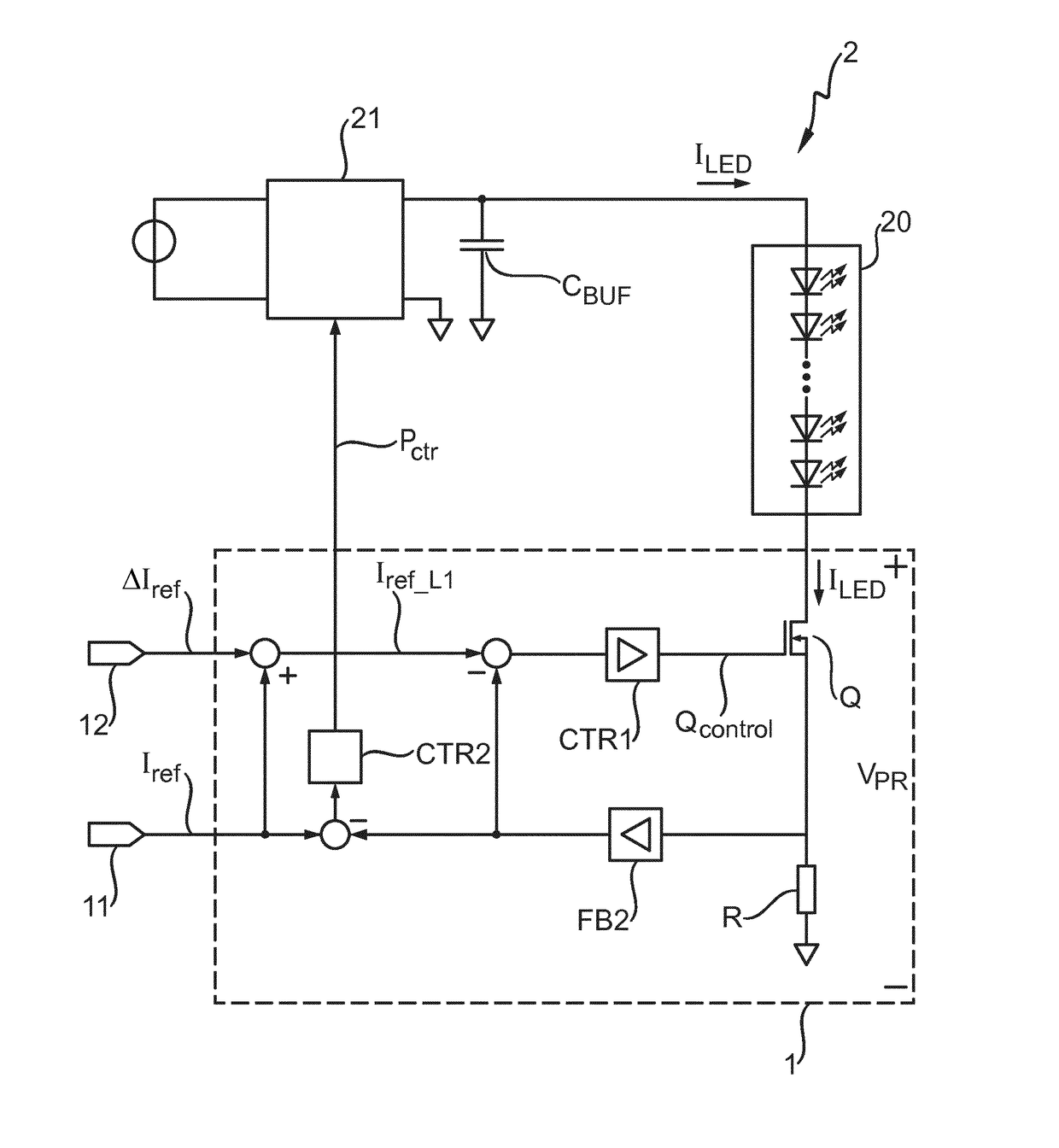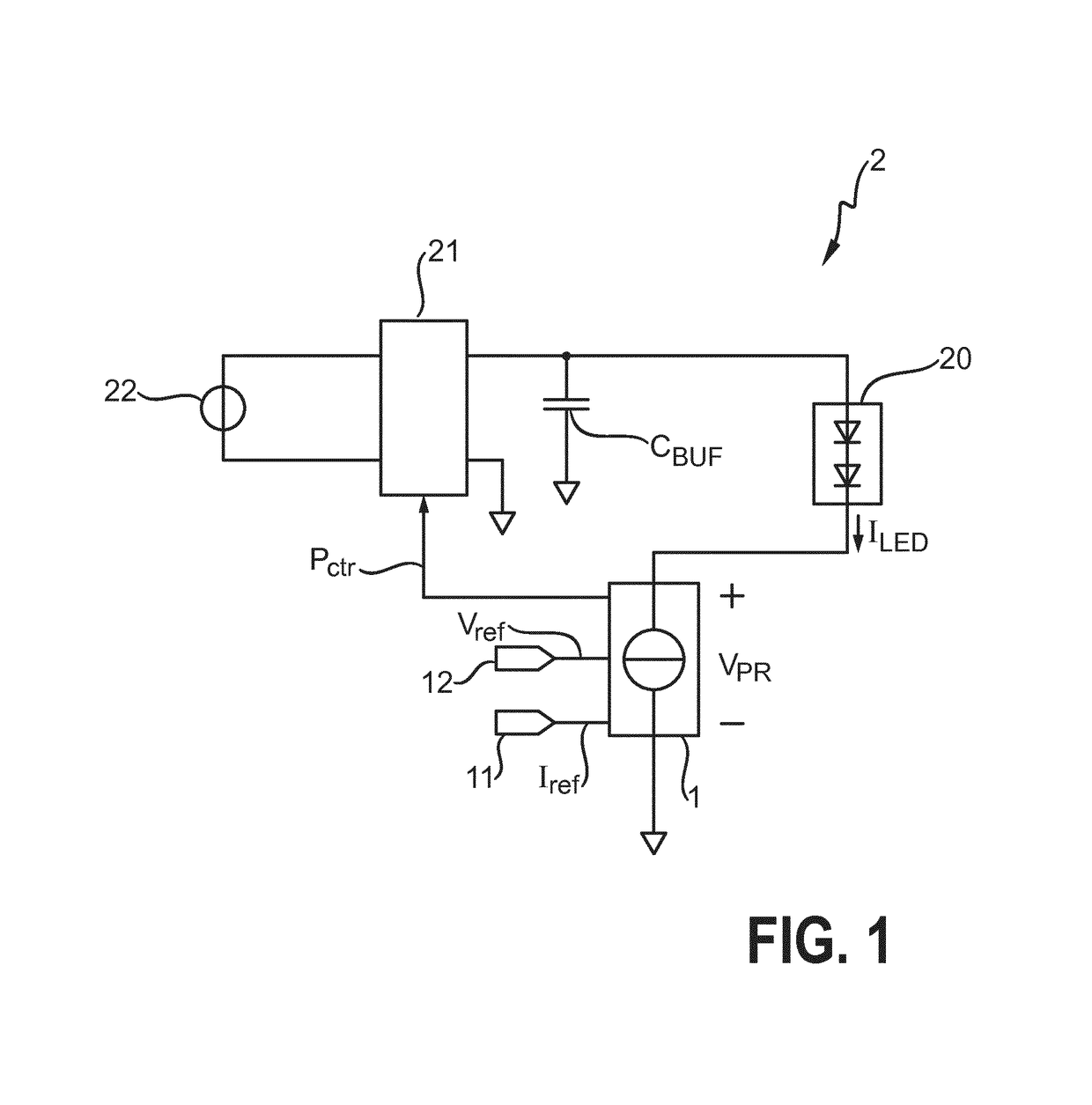Linear post-regulator
a post-regulator and linear technology, applied in the direction of electroluminescent light sources, electric lighting sources, semiconductor lamp usage, etc., can solve the problems of high led ripple current, inability to completely correct, and dynamic resistance also tends to decrease in time, so as to achieve a favorable increase in light output
- Summary
- Abstract
- Description
- Claims
- Application Information
AI Technical Summary
Benefits of technology
Problems solved by technology
Method used
Image
Examples
Embodiment Construction
[0035]FIG. 1 shows a simplified schematic representation of an LED lighting arrangement 2 according to the invention. A power supply 22 delivers a rectified signal to a single-stage high power-factor (HPF) front-end switched-mode converter 21. A storage capacitor or buffer capacitor CBUF is connected across the outputs of the converter 21 and is arranged in parallel with a series arrangement comprising a lighting load 20 and a post-regulator 1 according to the invention. The post-regulator 1 according to the invention is realised for connection between a terminal cathode of the LED lighting load 20, and a terminal of the converter 21. The voltage VPR across the post-regulator 1 is indicated. The lighting load comprises an LED arrangement 20 as described above. The LED lighting arrangement 2 comprises the linear post-regulator 1 according to the invention, comprising a number of cascaded control loops to control the average LED current ILED and also to reduce the post-regulator losse...
PUM
 Login to View More
Login to View More Abstract
Description
Claims
Application Information
 Login to View More
Login to View More - R&D
- Intellectual Property
- Life Sciences
- Materials
- Tech Scout
- Unparalleled Data Quality
- Higher Quality Content
- 60% Fewer Hallucinations
Browse by: Latest US Patents, China's latest patents, Technical Efficacy Thesaurus, Application Domain, Technology Topic, Popular Technical Reports.
© 2025 PatSnap. All rights reserved.Legal|Privacy policy|Modern Slavery Act Transparency Statement|Sitemap|About US| Contact US: help@patsnap.com



